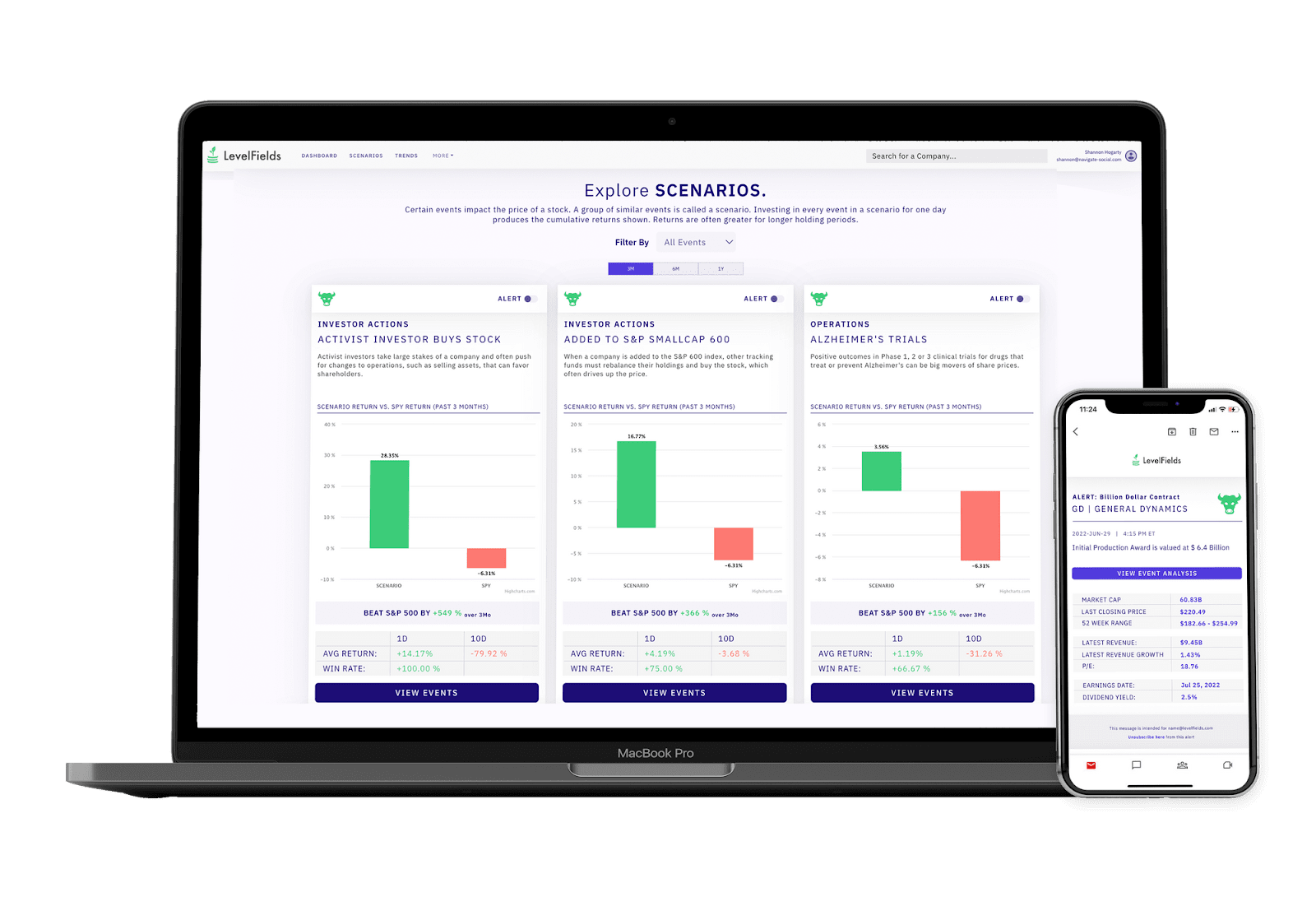Explore our complete guide to sector investing and learn all about what it is, the best strategies, and tools to start trading!
Trading Strategies
Table of Contents
Sector investing is a way to focus your money on specific parts of the economy that you believe will perform well.
Instead of spreading your investments evenly across the market, you choose industries (like technology, energy, or healthcare) based on research, trends, and market conditions. You can take advantage of growth in certain areas while managing risk in others.
By paying attention to how different sectors respond to economic changes, you can position your portfolio to benefit from shifting market trends.
In this guide, we’ll discuss how sector investing works, the most effective strategies to use, and the best tools to help you succeed.
Sector investing means putting your money into a specific part of the economy. Instead of buying the whole market, you target one sector that you believe will outperform.
Each particular sector includes companies with similar business activities or shared characteristics, such as information technology, energy, utilities, and real estate.
Sector investing is built on the idea that different parts of the economy don’t move in the same direction at the same time. Here’s how it works:
For example, you can invest in technology stocks, like Apple (AAPL) and Amazon (AMZN), if you expect tech to grow even bigger.
Here are the main reasons to use sector investing:
Sector investing lets you put your money into multiple sectors instead of focusing on a single area. You can choose from several investment opportunities and spread your risk.
For example, you can hold stocks in specific sectors, like technology, healthcare, and energy, at the same time. If one sector slows down, gains in another can help balance your portfolio.
Sectors tend to perform differently depending on economic and business cycles. Some thrive during bull markets, while others perform better in slowdowns.
For instance, consumer discretionary stocks often rise in expansions, while utilities hold steady in downturns.
By understanding what makes stocks go up and down, you can shift your focus before trends become obvious.
Focusing on specific sectors with strong growth potential can increase investment returns.
Technology, renewable energy, and biotech have historically outperformed other sectors during certain periods.
This targeted approach works best when you know how to analyze stocks and have reliable data on past performance.
Some major industries expand steadily over the years, which are driven by long-lasting changes in consumer needs, technology, or regulation. Popular examples include clean energy adoption, healthcare innovation, and digital transformation.
Investing in sectors tied to these trends can offer sustained growth potential.
You create a portfolio that benefits from both current market opportunities and durable long-term drivers.
While sector investing offers clear benefits, it also brings risks and possible loss. Every investor should understand these risks before committing capital.
Changes in interest rates, regulations, or government policies can create significant investment risk for certain sectors.
For example, new environmental rules might pressure energy companies, while healthcare reforms could impact pharma stocks.
Since certain sectors respond differently to policy shifts, your portfolio’s performance can change quickly.
Tip: Closely monitor economic trends and government regulations to protect your investments from sudden negative impacts.
Some sectors naturally see more price swings than others. Technology often experiences high market volatility due to rapid innovation cycles and shifting sentiment.
While these swings can create investment opportunities, they can also lead to potentially large losses.
Tip: Keep position sizes smaller in volatile sectors to limit the impact of large price swings. You can also use stop-loss orders to lock in gains.
Knowing when to enter or exit a sector is difficult, even for experienced investors. That's because the stock market moves on both fundamentals and sentiment, making it difficult to predict short-term shifts.
Misjudging timing can lead to missed opportunities or unnecessary losses.
Tip: Use technical indicators for entry and exit, such as relative strength index (RSI), moving average convergence divergence (MACD), and Bollinger bands, to reduce timing risks.
A concentrated position in one sector can lead to potentially large losses if that sector underperforms.
This narrow focus limits diversification benefits and leaves your portfolio more exposed to sector-specific events. For example, an oil price collapse can heavily impact an energy-only portfolio.
Tip: Spread your investments across different sectors to reduce the chance of a single event causing a major impact on your profits.
After understanding the risks, you can apply these approaches to make sector investing work for your portfolio.
Sector rotation is one of the most popular sector-based strategies. It involves moving capital between sectors based on economic phases.
For example, during expansion periods, you can focus on growth-oriented sectors like technology and consumer discretionary.
If the market is down, you can shift to defensive sectors that hold value, such as utilities and healthcare.
The goal is to understand market movers, anticipate shifts, and position ahead of time. This improves your chances of capturing gains while limiting downside risk in weaker sectors.
Thematic investing focuses on sectors connected to the latest trends, such as renewable energy, AI adoption, or aging populations.
This approach gives you targeted exposure to areas with strong growth drivers beyond short-term market cycles.
While themes can deliver powerful returns, they require careful monitoring to confirm the trend remains intact.
Align thematic investing with proven fundamentals to avoid chasing hype. Always compare the sector’s current position against your risk tolerance and time horizon before committing capital.
Top-down analysis starts with the economy, narrowing down to sectors, then to individual companies. Bottom-up analysis begins at company fundamentals before moving to sector health.
Combining both can strengthen your decision-making. You can choose a sector that meets your investment objectives while ensuring strong company performance.
You can also filter out opportunities that look good in isolation but don’t align with the broader market environment.
Tactical allocation involves making short-term adjustments to your sector investments when conditions change.
This strategy often requires faster decision-making and a clear set of rules. It works best when combined with timely data, technical indicators, and clear exit plans.
While it can boost returns in active portfolios, it can also raise trading costs if done too often.
Limit tactical shifts to situations where you have strong supporting data and understand how they fit within your portfolio.
Balancing growth sectors with defensive sectors can create a more stable return profile.
This approach expands on sector rotation strategies. Instead of switching between growth and defensive sectors, you blend both types in your portfolio at the same time.
You avoid the need for frequent large shifts while still having the flexibility to adjust weights as market conditions change.
Over time, rebalancing between these groups can help you manage risk without missing potential gains.
Below are popular sectors that form the core of most investment opportunities.
Sector investing becomes easier with the right tool. Here are the best platforms to consider:

LevelFields is an AI-powered stock analysis tool designed to support your sector investing decisions.
It automatically scans news events, such as CEO changes, regulatory actions, and financial filings, that tend to move sector or stock performance. You can track capital allocations from companies in specific sectors, providing a high level view of how that sector is performing.
You can choose proven scenarios that can impact stocks, review price reaction patterns, and set custom alerts to follow events from stocks in specific sectors.
You can even add companies from a specific sector to your watchlist. This way, you can closely monitor their performance and plan accordingly for upcoming events.
With LevelFields, you act before broader market sentiment shifts. For example, you could spot early signs of sector rotation or exit a vulnerable sector before losses grow. This gives you an edge in timing and clarity.

TradingView is a flexible platform that combines advanced charting tools, sector-level insights, and community-driven analysis.
You can keep a pulse on performance across the broader stock market and drill down to sector specifics.
You also gain access to powerful tools, such as relative strength indicators and stock heatmaps. You can quickly identify which sectors lead or lag over time, which helps you make timely trading decisions.

Fidelity provides a well-structured platform for investors who want research depth, sector comparison tools, and a wide selection of investment options.
Through its sector investing hub, you can compare fundamentals, performance data, and market weight. You can also analyze how each sector stacks up against benchmarks like the S&P 500.
Plus, you can review your sector exposure, evaluate weightings, and spot potential imbalances that can affect future results.
Sector investing can be rewarding, but identifying timely shifts and avoiding weak sectors is a constant challenge.
LevelFields changes that by scanning millions of events every month, from earnings surprises to regulatory updates and leadership changes. It reveals how news reports could impact stock prices based on historical patterns.

With event-driven scenarios and real-time email alerts, you can track emerging signals across sectors and spot potential opportunities long before the overall market reacts.
Sector funds focus on one area of the market, so they lack broad diversification. If that sector struggles, your returns can drop quickly. This concentrated approach can increase volatility compared to a more balanced asset allocation, where gains in other areas may offset losses.
The 10/5/3 rule suggests aiming for 10% returns from the equity market, 5% from bonds, and 3% from cash or savings. It is commonly used to set reasonable expectations for investment returns.
The 3-5-7 rule is a different benchmark that uses slightly lower targets. It suggests that investors shouldn't risk more than 3% of their capital on a single trade, 5% across all open positions, and 7% of their entire portfolio exposed to market risk at any given time.
The four main investment types are stocks, bonds, real estate, and cash equivalents. Stocks can be diversified or involve a single stock, bonds offer fixed income, real estate provides potential rental income and appreciation, and cash equivalents (e.g., money market funds) offer stability and liquidity.
There’s no single “best” sector because performance changes with economic cycles. Technology may lead in growth periods, while healthcare or utilities may hold value in downturns. Your choice should align with your goals, time horizon, and risk tolerance.
Join LevelFields now to be the first to know about events that affect stock prices and uncover unique investment opportunities. Choose from events, view price reactions, and set event alerts with our AI-powered platform. Don't miss out on daily opportunities from 6,300 companies monitored 24/7. Act on facts, not opinions, and let LevelFields help you become a better trader.

AI scans for events proven to impact stock prices, so you don't have to.
LEARN MORE